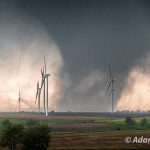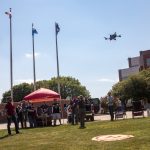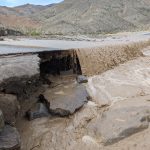
The way violent tornadoes in the United States are rated has changed over time, resulting in no EF5-rated tornadoes since 2013, according to researchers from the NOAA National Severe Storms Laboratory in a paper published…

The way violent tornadoes in the United States are rated has changed over time, resulting in no EF5-rated tornadoes since 2013, according to researchers from the NOAA National Severe Storms Laboratory in a paper published…

For the first time, the NOAA National Severe Storms Laboratory’s Warn-on-Forecast System (WoFS) has successfully run short-term forecasts for three geographic areas at once—predicting severe weather, winter weather, and fire weather. The historic milestone demonstrates…

For more than 30 years, the nation’s weather forecasting has relied heavily on the NEXRAD radar network. This network has been the global gold standard in weather radar, however the system is reaching the end of its designed lifespan.
Phased array radar stands as a potential paradigm-shift solution for the future of weather radar in the United States.

SCIENCE IMPACT: NSSL’s Warn-on-Forecast System yields 75 lead time on Greenfield, Iowa tornado, demonstrating potential for long-range tornado warnings.

NSSL’s Low-Level Internal Flows in Tornadoes experiment, or “LIFT”, intercepted a violent tornado southeast of Duke, Okla., gathering a data set that could prove to be significant in our understanding of tornado winds at the ground level.

The Warn-on-Forecast System is a revolutionary approach to forecasting severe weather and tornadoes that could lead to a historic leap in warning lead times.

For more than 60 years, NSSL researchers have been taking to the field to study tornadoes and severe weather.

The NOAA National Severe Storms Laboratory (NSSL) hosted its inaugural NSSL Science and Engineering Day recently, gathering lab staff for a full day of reflection, discussion and collaboration. With a focus on appreciating the history and achievements of the lab while also casting a vision for the future, the event gave lab staff a unique opportunity to share, collaborate and think about the future of NSSL.

As Tropical Storm Hilary made landfall in California and affected the southwestern United States, researchers at the NOAA National Severe Storms Laboratory (NSSL) stepped into action, using a cutting-edge tool to lend support to forecasters.